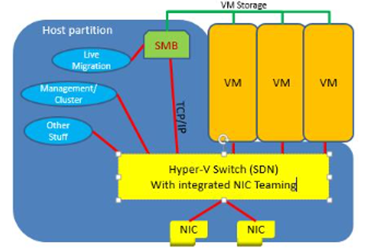Tip of the Day: What's New in Hyper-V Networking: Switch Embedded Teaming (SET)
Today’s Tip…
Background
NIC teaming, also known as Load Balancing/Failover (LBFO), allows multiple network adapters to be placed into a team for the purposes of
- Bandwidth aggregation, and/or
- Traffic failover to maintain connectivity in the event of a network component failure.
This feature has long been available from NIC vendors but until Windows Server 2012 NIC teaming was not included with Windows Server.
Teaming on Windows Server 2016
Windows Server 2016 introduces Switch Embedded Teaming (SET), an alternative NIC Teaming solution that you can use in environments that include Hyper-V and the Software Defined Networking (SDN) stack in Windows Server 2016. SET integrates some NIC Teaming functionalities into the Hyper-V Virtual Switch.
SET allows you to group between one and eight physical Ethernet network adapters into one or more software-based virtual network adapters. These virtual network adapters provide fast performance and fault tolerance in the event of a network adapter failure.
Summary
There are two versions of NIC teaming in Windows Server 2016:
- The stand-alone NIC Teaming solution, i.e., the NIC Teaming solution that was available in Windows Server 2012 and Windows Server 2012 R2, is available in Windows Server 2016 in ServerCore and full Server versions.
- A new teaming solution integrated with the Hyper-V switch and known as Switch-Embedded Teaming (SET), is available in all SKUs of Windows Server 2016 including Nano.
See the following resources for more information on SET:
Windows Server 2016 NIC and Switch Embedded Teaming User Guide
Remote Direct Memory Access (RDMA) and Switch Embedded Teaming (SET)
